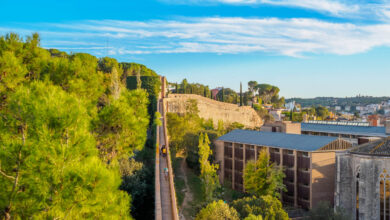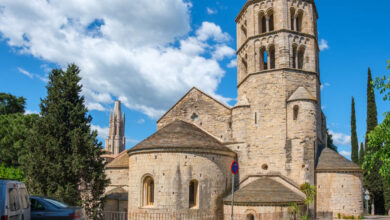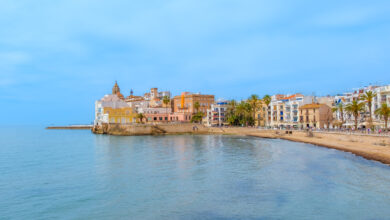
Girona, the City that Enchants
Girona, also known as Gerona, is the capital of the province of Girona, located in the northeast of Catalonia, and surrounded by four rivers (Ter, Onyar, Güell, and Galligants) and two significant mountain ranges (the Guilleries and the Gavarres).
The history of Girona dates back to the Iberians, a people who settled at the highest points around the plain of Girona and were later overtaken by the Romans who founded Gerunda, a name referring to the Onyar River.
Today, Girona is one of the major tourist centers in Catalonia and has many must-see places of interest, all linked to the history and geography of this location.
What to See
The best way to visit the old town of the city is on foot, to discover its squares and idyllic hidden corners. The silhouette of the Girona Cathedral stands out, a Catholic church that boasts the widest Gothic nave in the world and which, except for the nave of St. Peter’s Basilica at the Vatican, surpasses all other naves from all architectural styles worldwide. It is located in the center of Girona’s old town, at the intersection of streets that outline the Roman Gerunda.
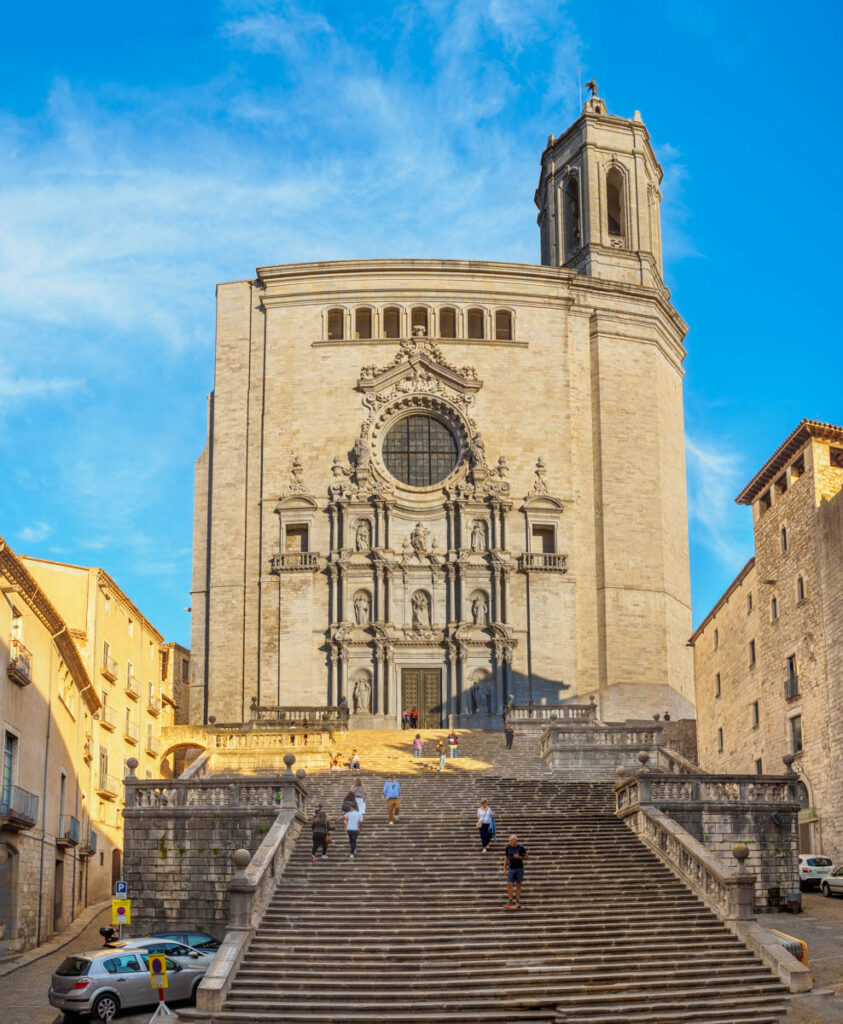
Climbing up the Rei Martí staircase, you will reach the portal de Sobreportes; the ancient northern gate of the city, which, in turn, precedes the Cathedral Square.
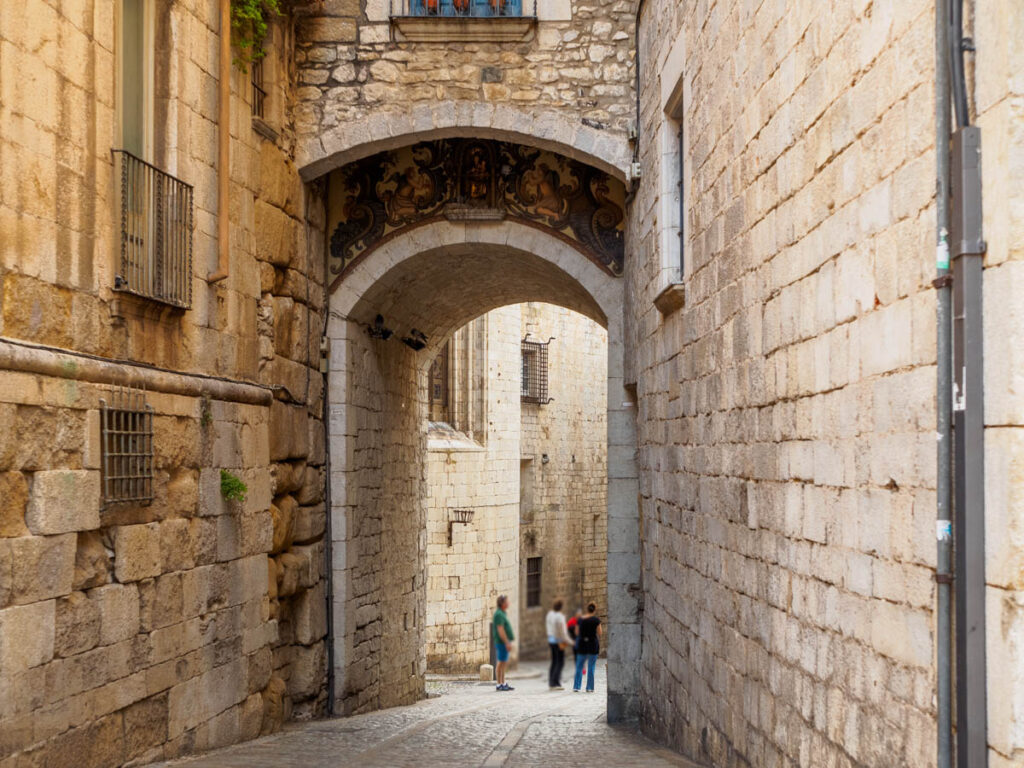
To access the Apostles’ Square, you can climb the grand staircase of the cathedral, or alternatively, ascend via the Pear Staircase, which connects the street of la Força with the iconic temple.
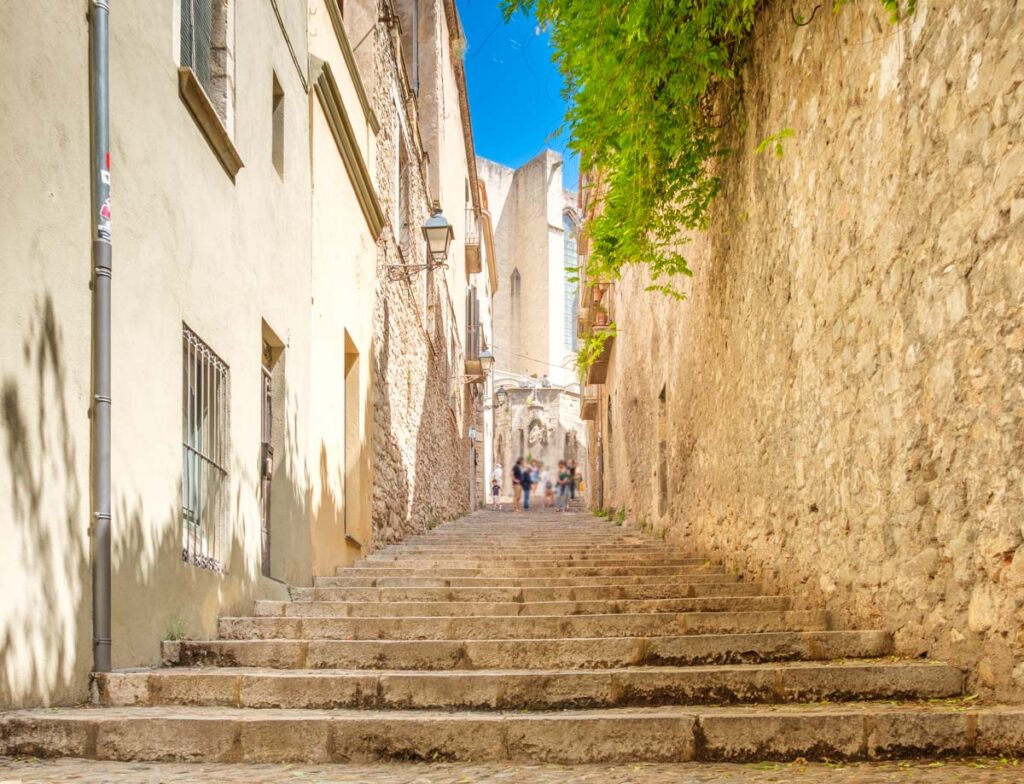
From this square, after crossing an arch on one side of the cathedral, you can visit the French Gardens, a historically charming place. Its name alludes to the nationality of the last owner, the writer Madame Mathieu.
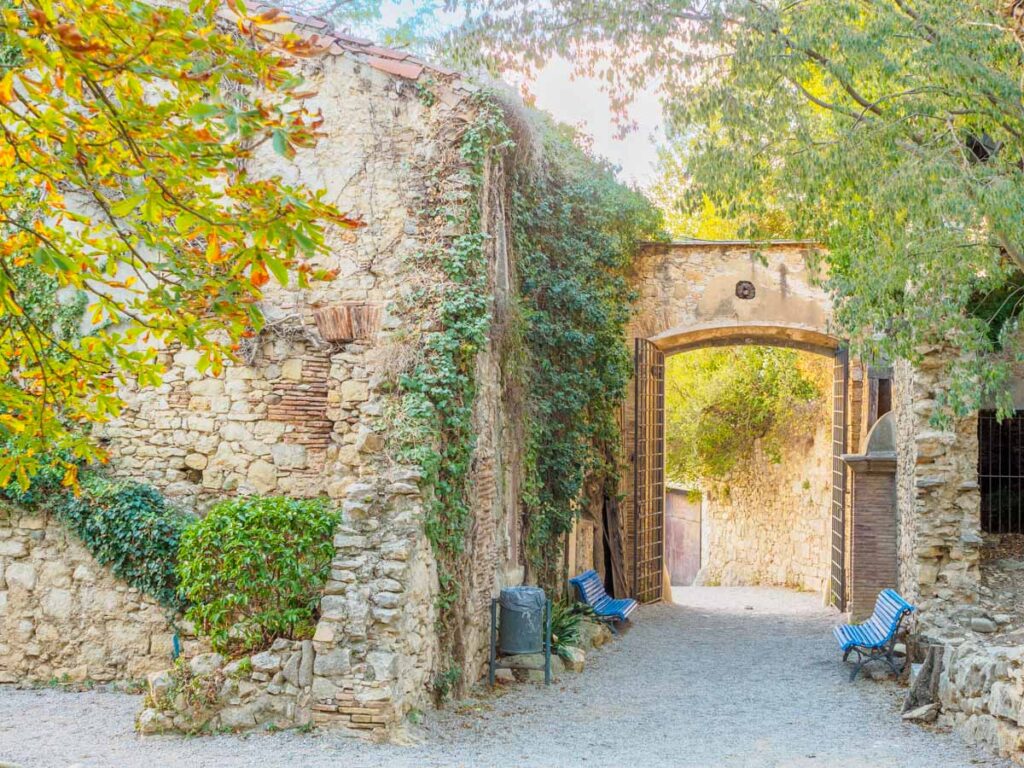
At this point of the visit, we recommend walking along the Archaeological Walk and the Gardens of the Germans, which surround the Cathedral.
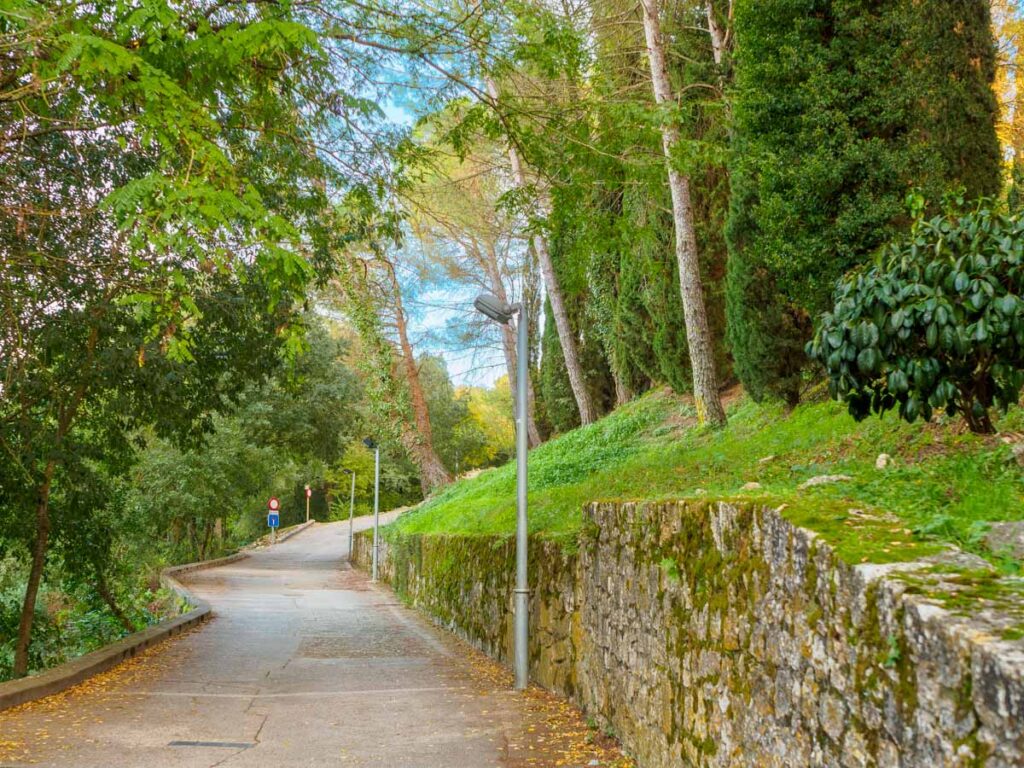
Additionally, Girona also boasts many other religious buildings, such as the oldest basilica in the area; the church of Saint Felix of Girona, from the 11th century, which houses eight Roman sarcophagi from the 3rd and 4th centuries.
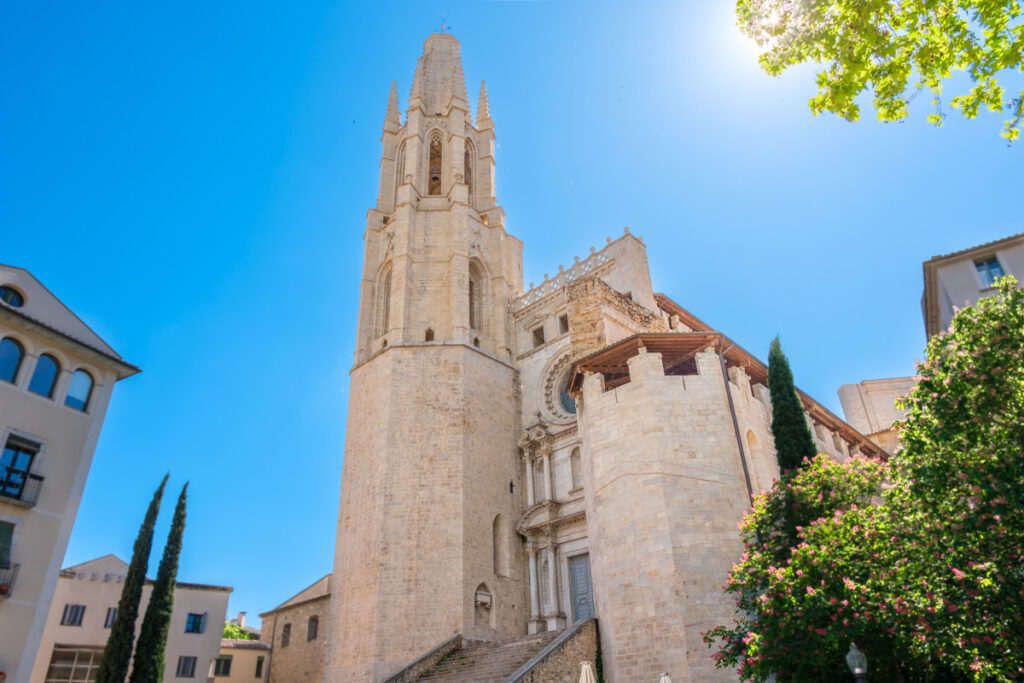
On the other hand, the monastery of Saint Peter of Galligants houses one of the most charming cloisters of Catalan Romanesque art.
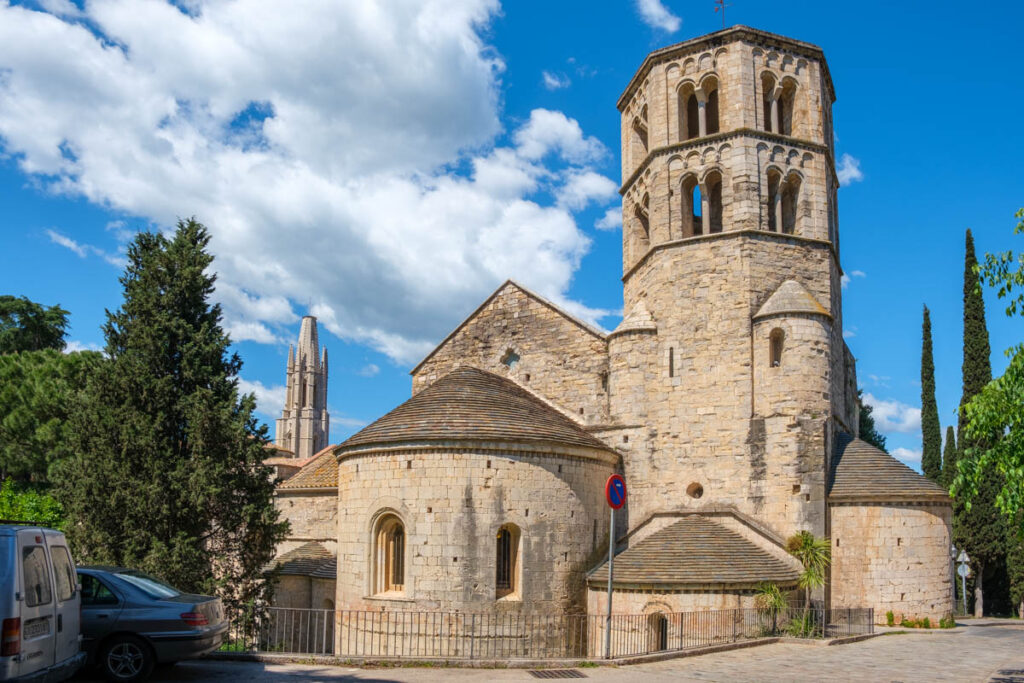
Among the rich number of historical points, the network of streets that meander through Girona also stand out, offering visitors the chance to immerse themselves in the Girona atmosphere.

The Jewish quarter is the ultimate representation of the splendor era of the Jewish community in the 13th century, which was expelled by the Catholic Monarchs.
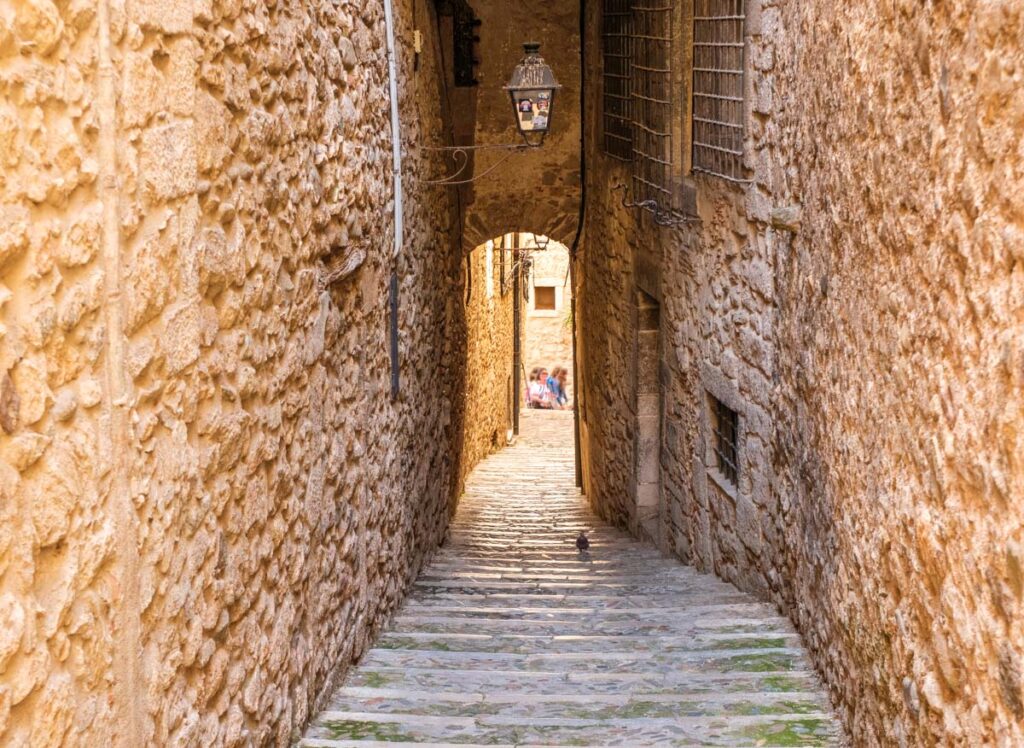
Due to the influence of other communities within the city of Girona, one can also find the Arab baths, dating from 1194 and which are the best-preserved Romanesque civil complex in the country.
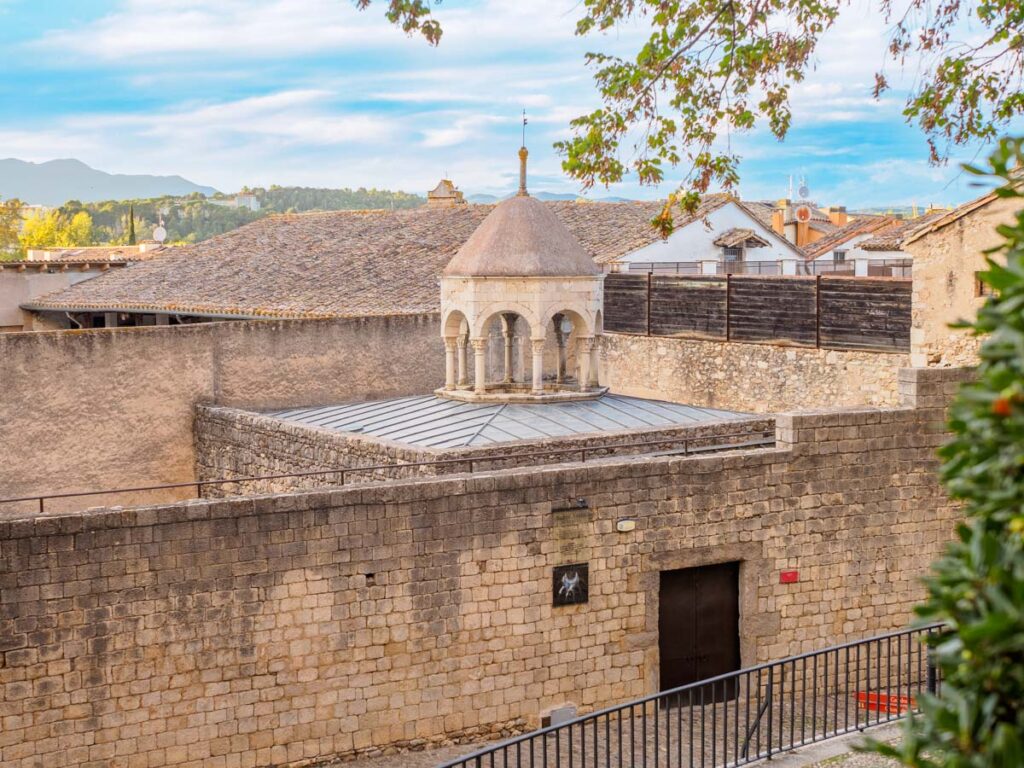
From the medieval period, the walls from the 9th and 14th centuries are also preserved; converted into a public route that encloses the so-called Old Quarter, the part of the city that concentrates most of the monuments and the original urban layout.
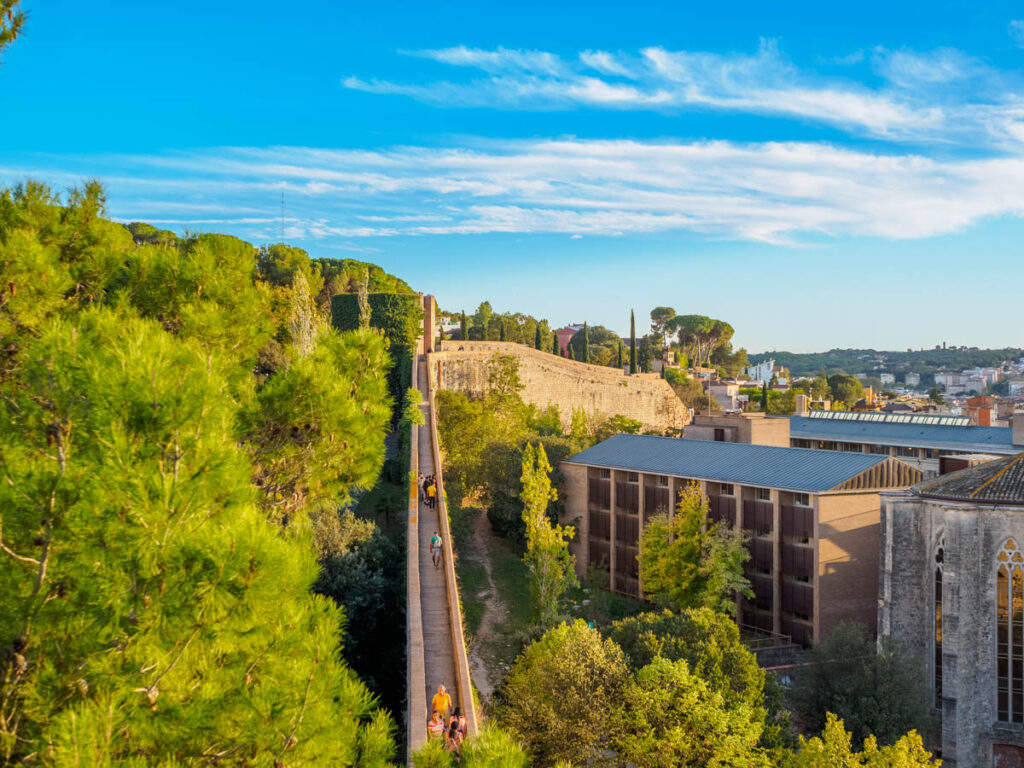
At the highest point of the walled enclosure is the convent of Saint Dominic, from the 13th century, which comprises a Gothic cloister and a church dedicated to the Annunciation, which are part of the building of the Faculty of Arts at the University of Girona.
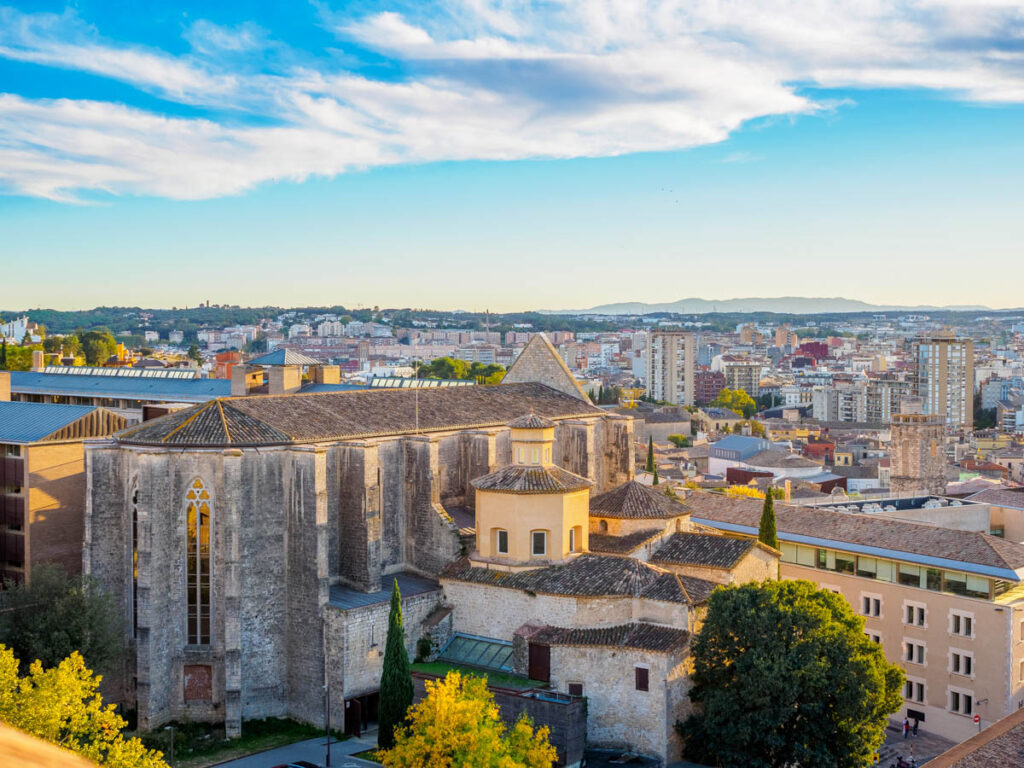
Continuing on the itinerary through the capital of the Girona regions, it is also worth mentioning the city’s most iconic image: the houses along the Onyar River. Along this river, various colored buildings are located, creating a picturesque combination, reflected in the waters of the Onyar.

Moreover, there are several bridges that connect both sides of the river, adding more interest and beauty to the cityscape of Girona. One of the most famous is the Old Fishmongers Bridge, also known as the Eiffel Bridge, in honor of the architect of the Eiffel Tower, or the stone bridge, built during the reign of Isabel II.
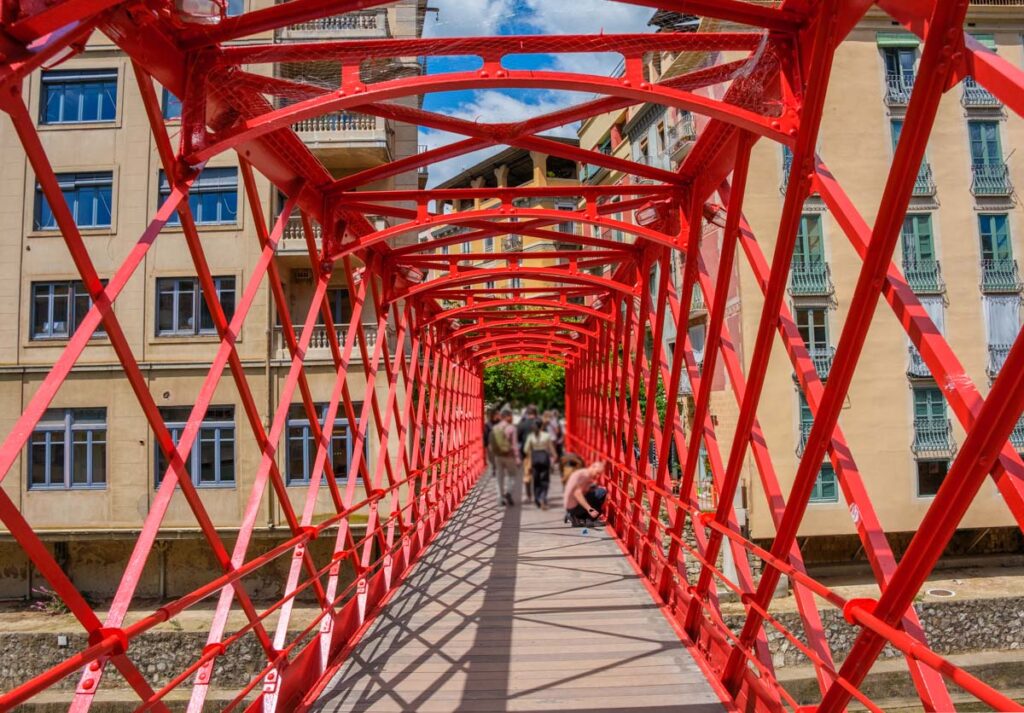
Also, not to be missed are the Rambla de la Libertad, the most bustling area of Girona created in 1885.
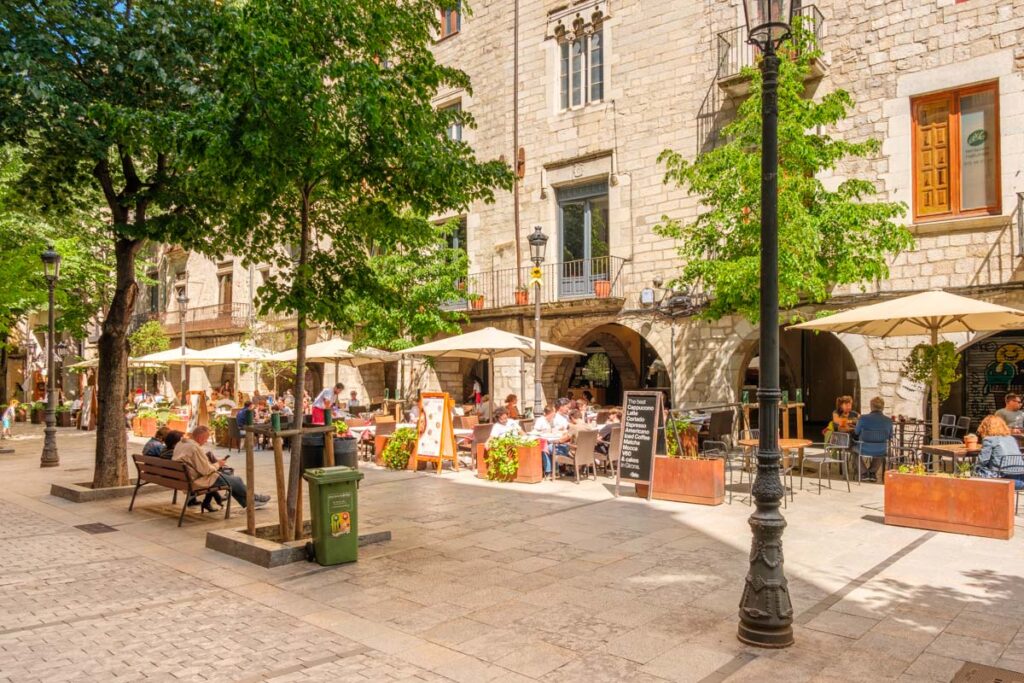
In this area, prominent palaces such as the Palace of Caramany from the 16th and 18th centuries, the Golden Fountain; headquarters of the CaixaForum-Girona, and the Agullana Mansion; known as the rise of Saint Dominic, crossed by a monumental arch, next to Saint Martin’s church, are also highlights.
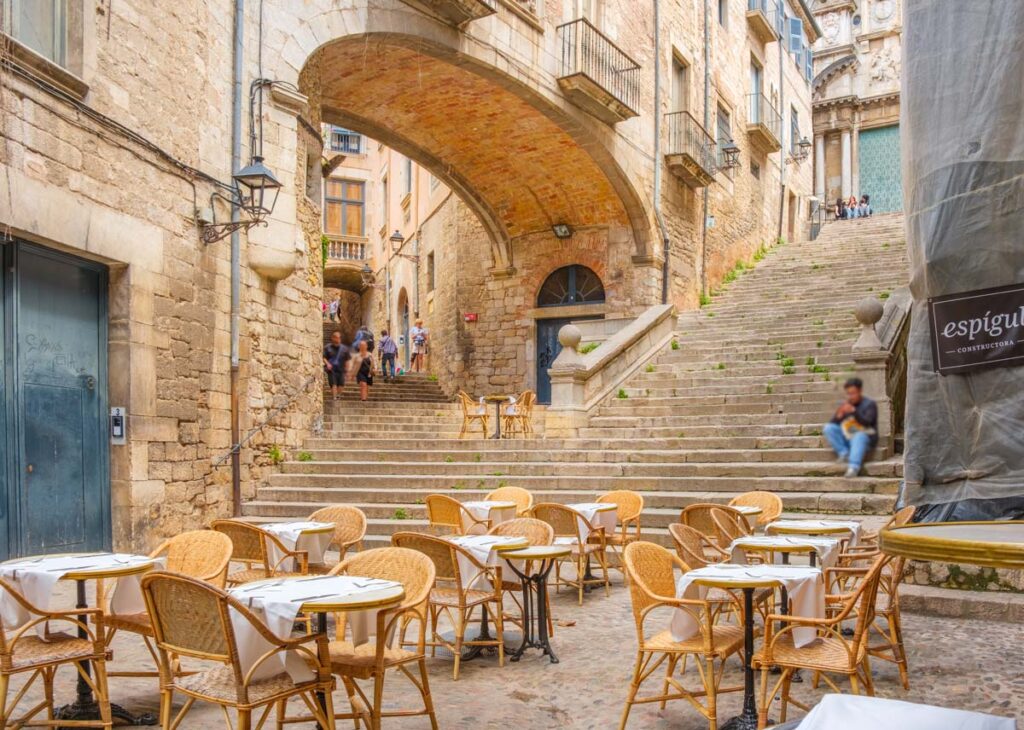
At the Plaça de la Independencia, which has a nineteenth-century air, you are surrounded by porticoes that house various bars and restaurants where you can sit and enjoy the bustling atmosphere of beautiful Girona.

The House of Culture, managed by the Girona Provincial Council, is located in the old Hospice of the city. This cultural center, opened in 1966, consists of different services, such as the Isaac Albéniz Music Conservatory, the Theatre Training Center; el Galliner, and the municipal reading room. Additionally, it promotes and collaborates with different cultural proposals from the Girona region.
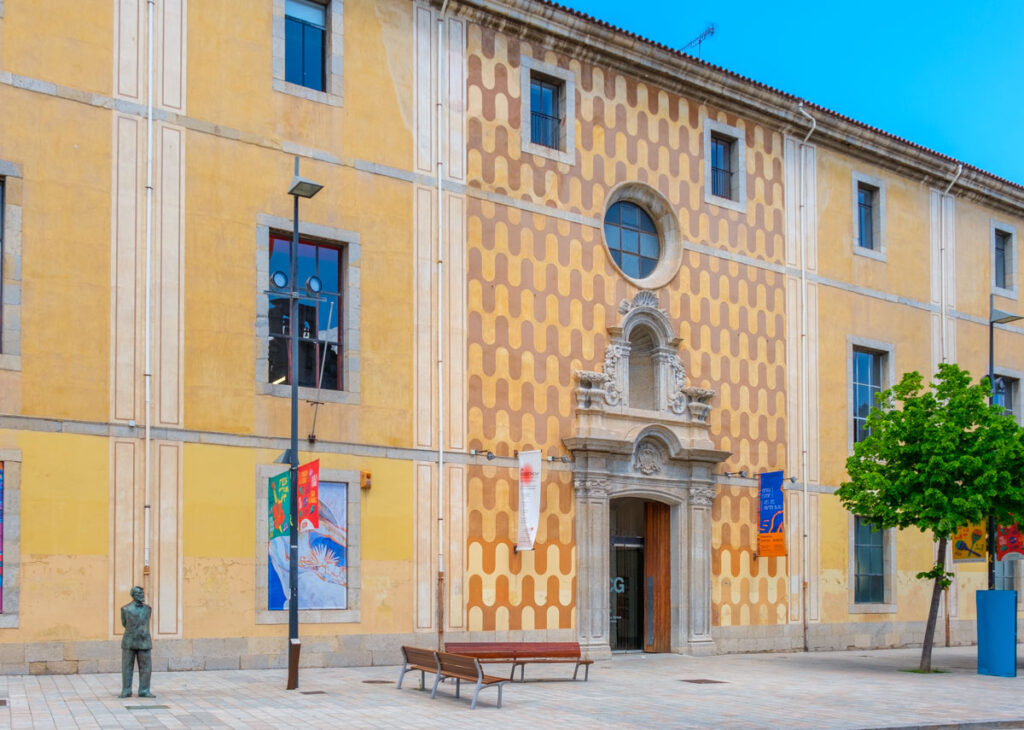
In front of the House of Culture is the old Hospital of Santa Caterina, active from the end of the 17th century to the beginning of the 21st century, which preserves the hospital pharmacy with a unique collection of pharmaceutical utensils. On special occasions, it opens to the public, with guided tours by the Art Museum.
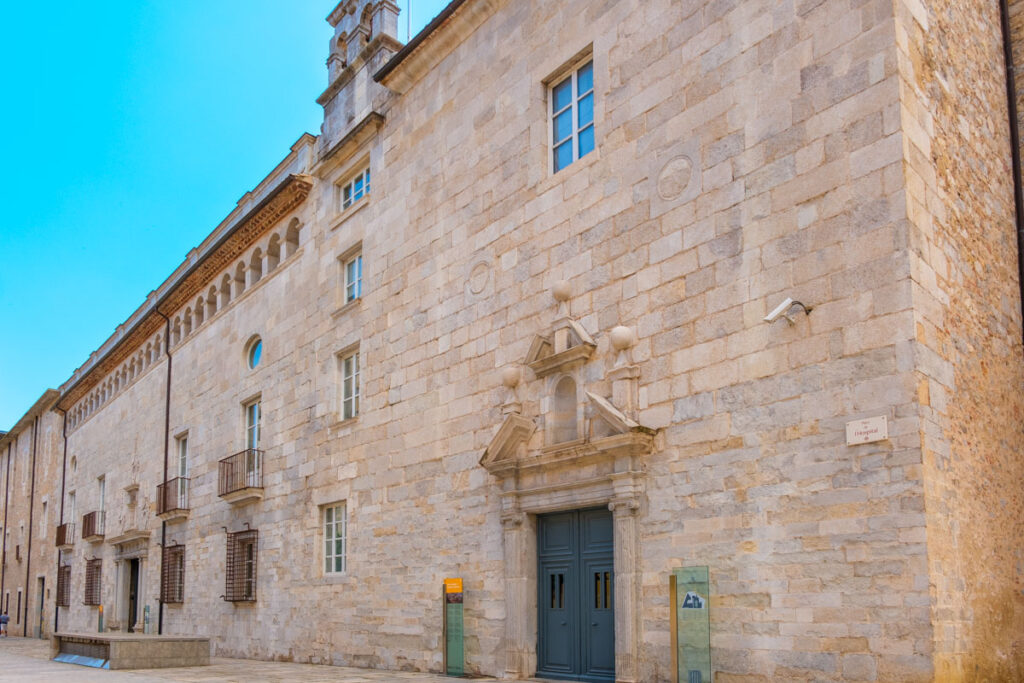
In addition to visiting the most emblematic monuments and places, it is worth “straying off the beaten path” and discovering certain spots in the Old Quarter such as the Angel’s Garden, the Street of Flies, the Masó-Puig Pharmacy (currently Saguer), the Plaza of Grapes, the Church of the Sacred Heart, or the viewpoint and gardens of John Lennon.
Regarding natural spaces, Girona also boasts the largest urban park in Catalonia; the Park of La Devesa. This is a 40-hectare area full of plane trees where you can go for a walk and relax from the relative hustle and bustle of the city center. At one end, you can find the gardens of La Devesa, dating back to the 19th century. The area is often used for leisure and sports activities.

Next to the church of Saint Felix, where you can find the butt of the lioness, a sculpture in the shape of this animal that legend says is vital to visit. They say, “you can only return to Girona if you have kissed the butt of the lioness“. An essential milestone to return to enjoy the views and the charming atmosphere of a city that captivates.

What to Do
The main attraction of the city is its rich historical and architectural heritage, which you can explore through this free tour of Girona. You can also take a complete tour of the historic center to learn about the most important historical sites.
With the Girona Episcopal pass, you can discover the Cathedral, the Basilica of Sant Feliu, and the Art Museum with a single ticket. And with Girona Museums, you get a 50% discount on admission starting from the second museum you visit, valid for six months.
For example, the Cinema Museum is very popular among family audiences. It houses the Tomàs Mallol Collection, comprised of cinematographic and precinematographic objects of great historical value. The building is part of the Inventory of Architectural Heritage of Catalonia. You can purchase tickets at the following link.
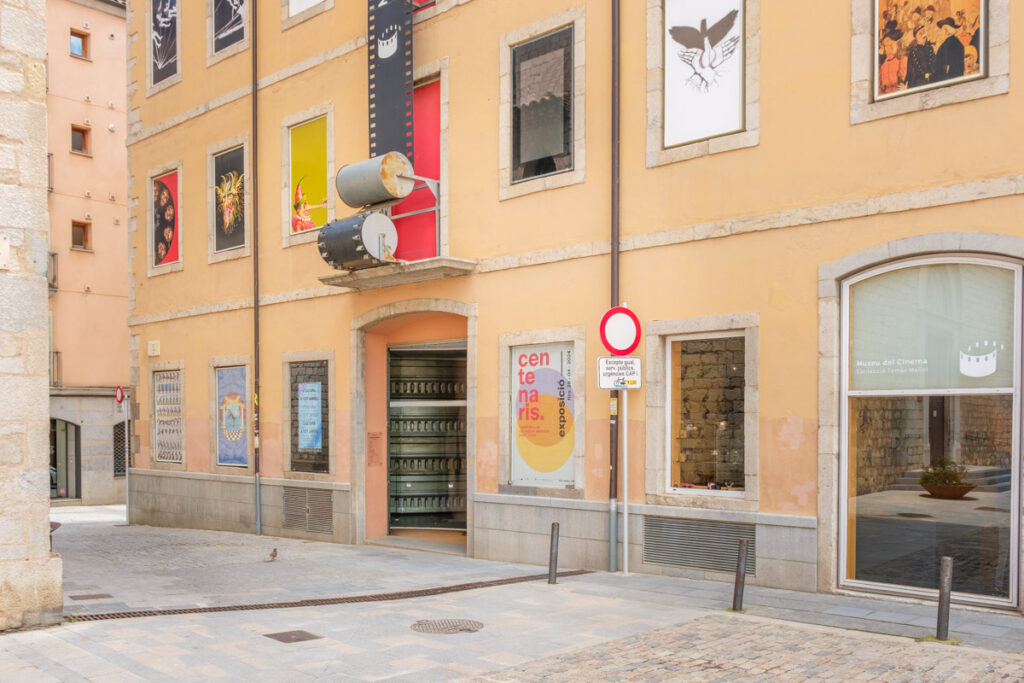
If you are interested in archaeological sites and history, you cannot miss the Museum of Archaeology of Catalonia-Girona, which houses a collection of archaeological elements from prehistory to the Middle Ages, discovered in the regions of Girona.
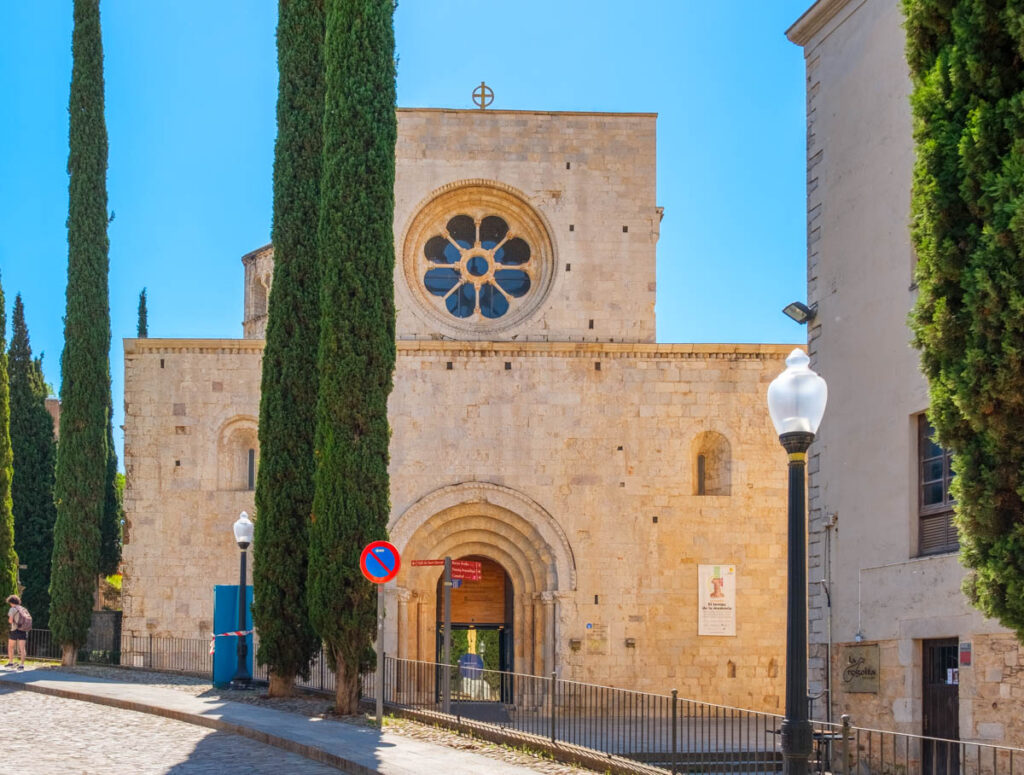
Additionally, the Art Museum, the Girona History Museum, located in an old Capuchin convent; the Jewish History Museum, and Casa Masó, the birthplace of this famous architect from Girona, with furniture and decorations from the Novecentismo period, are also highly recommended.
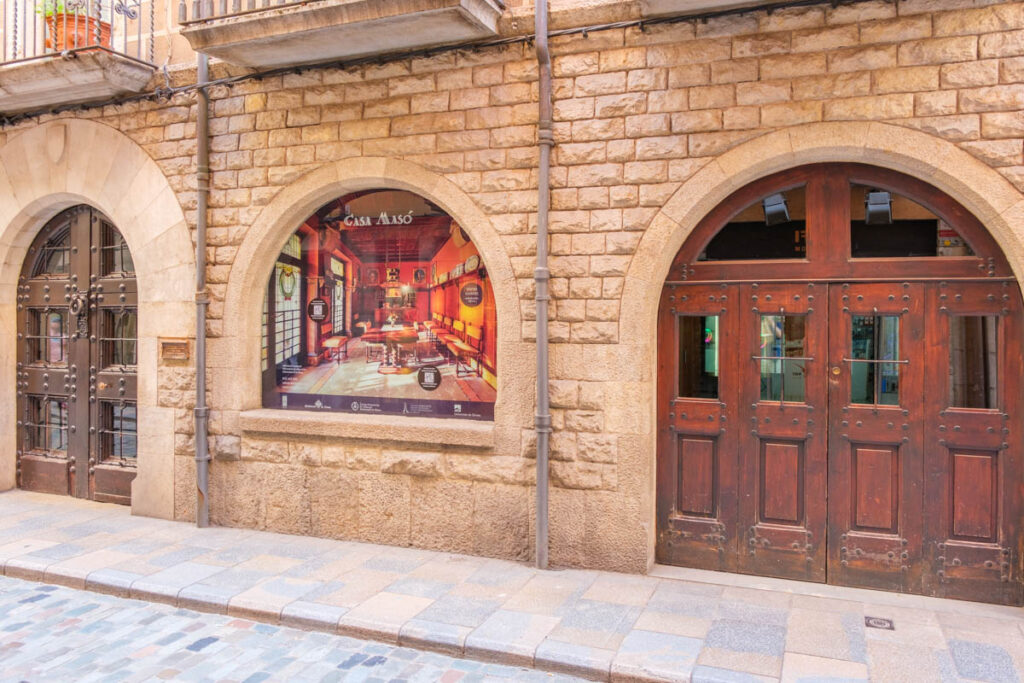
Among the works of Rafael Masó, notable are the Teixidor flour mill and the Teixidor house, popularly known as “La Punxa”, which currently serves as the headquarters of the College of Technical Architects and Surveyors of Girona.
Another option is to take one of the thematic tours that explore the city’s most popular sites, such as the locations from the well-known series Game of Thrones. In fact, you can take the following free tour of Girona’s Game of Thrones, and recreate your favorite scenes, like these stairs where Arya Stark sat in Braavos, searching her way through the unknown world.
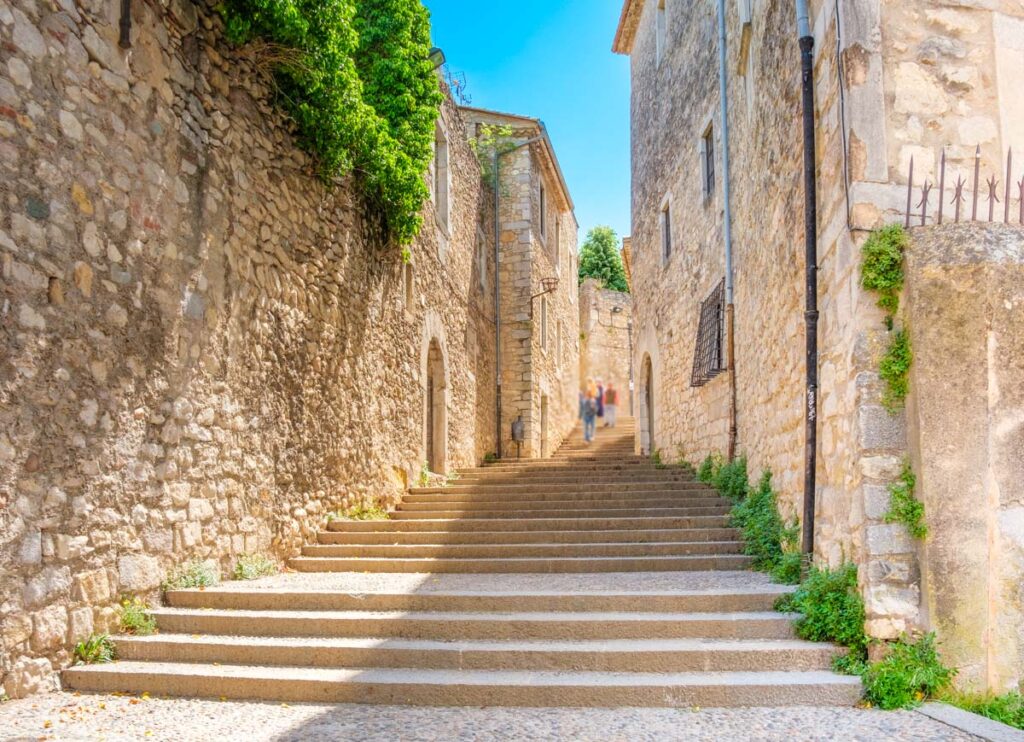
Also, an exceptional environment to enjoy a nature walk. Since 2015, the city has been designated a Sport Tourism Destination by the Catalan Tourism Agency for running, cycling (road and mountain biking), swimming, athletics, and tennis.
Some of the most popular areas include, the climb to the Castle of Saint Michael (east of Girona) and the summit of Rocacorba (west), both of easy difficulty and an approximate duration of 2 h and 35 min. In the Rocacorba area, you can visit the gorges of Canet d’Adri, where various sports such as canyoning can be practiced.
Or the itineraries through the Valley of Saint Daniel, such as the one that starts from the Monastery of Saint Peter of Galligants, crosses the mountain of the O and borders the Galligants River, reaching the Monastery of Saint Daniel. From Saint Peter, passing through the Iron and Miralles bridges, you can also reach the Puig de Saint Michael.
The Monastery of Sant Daniel has housed a community of Benedictine nuns for over a thousand years. On the first Saturdays of the month, guided tours of the building are organized, and you can take the opportunity to visit the Romanesque cloister and the church; which preserves the alabaster tomb of Saint Daniel.
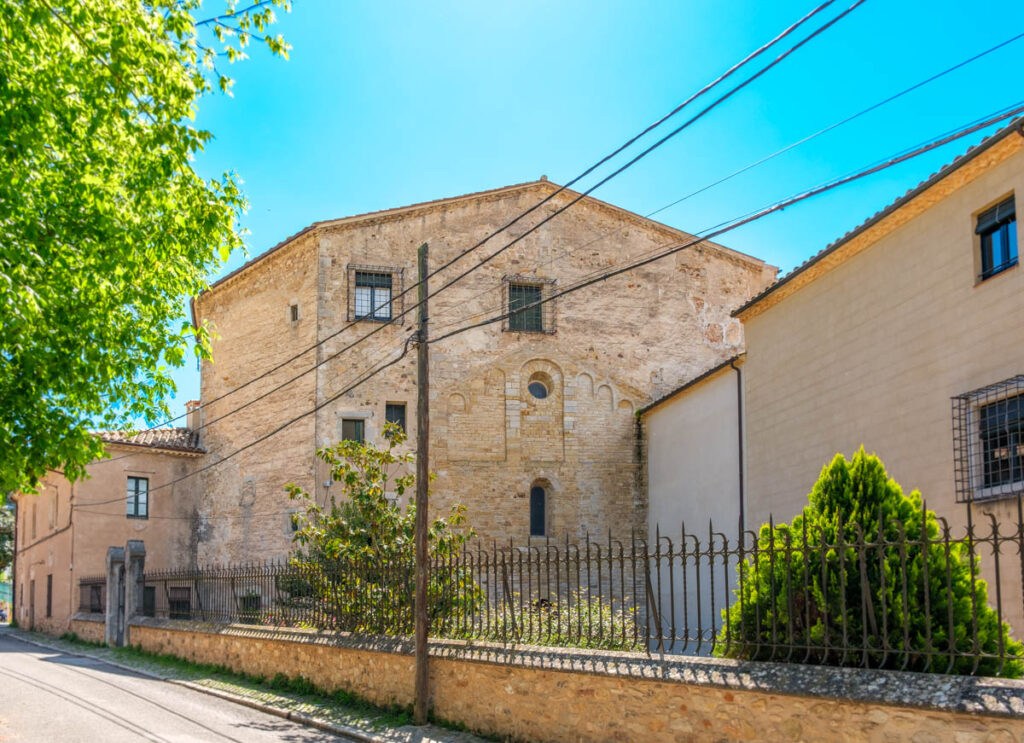
On a route of approximately 7.5 km shared between Girona and Salt, the landscape is defined by the orchards of Santa Eugènia and the Deveses of Salt. You can see the irrigation channels, the Ter boarding area, and the traditional wash houses. There is also a bike path following the Llémena and the Ter River, without difficulty.
And in the last ten years, Girona has become a nerve center for cycling, so you will not lack for bike routes. For cycling tourism enthusiasts, a few years ago the Greenway of the Carrilet was opened, which allows you to reach Olot, in addition to a wide network of secondary roads, greenways, paths, and tracks of the Gavarres massif.
Gastronomy
The province of Girona is known for the quality of its gastronomy, and thanks to culinary references such as Ferran Adrià and the Roca brothers, it has become an international benchmark. Indeed, in the province of Girona, there are 13 restaurants awarded a total of 18 Michelin stars.
Traditional Girona cuisine is based on typical Catalan dishes, where products from the fields, livestock, and fishing predominate. Among the specialties, the pot-cooked meat often accompanied by the small dishes of offal, sweet sausages, casserole rice, and the famous xuixos of Girona, a pastry filled with cream, fried, and covered with sugar stand out.

Also, other specialties widespread across the Girona counties include stuffed chicken, veal, various types of grilled meat, and the traditional snail dish.
Where to Eat
In Girona, you can find all kinds of food establishments, from the most traditional to signature and creative cuisine, including burger chains and specialties from around the world.
Thanks to its geographical location, the city enjoys a wide variety of high-quality raw materials, both from the sea and the mountains. To avoid surprises, we recommend you book a table in advance, as restaurants tend to fill up quickly during peak hours.
In the area of La Rambla, Plaza Cataluña, Plaza del Vino, Calle Nueva, Calle de Santa Clara, Plaza Independencia, and a part of the Eixample, you will find various shops and food establishments. From Monday to Saturday, you can also stop at the municipal market: the Market of Lleó.
Check out all the restaurants in Girona at Guiacat.
Where to Sleep
Staying in the city is the best if you want to thoroughly explore all the corners and visit other points of interest in the surroundings. There are options for all tastes and needs, and the main advantage is that Girona offers the best of big cities, yet retains the cozy charm of a small town.
However, there is increasing demand in the Girona capital, and this is reflected in the prices. This may be one reason for the growth of rural tourism, which emerges as an alternative offering more space and amenities, such as swimming pools or trails, while still being close to the city, the sea, and the Pyrenees.
Find all the rural accommodations in Gironès at Guiacat.
Festivities
The city offers a very varied cultural agenda throughout the year. You can enjoy music festivals such as Strenes, A Cappella, and Tempo Girona. In turn, the performing arts festivals are also well-known, such as the International Circus Festival Golden Elephant, the FITAG and High Season. For a family audience, we recommend the Festivalot and Ludivers.
However, the major festival and the most important in Girona are the Fairs and Festivals of Saint Narcissus, at the end of October and beginning of November. To celebrate the city’s patron saint, in the Devesa area, sample fairs and street markets are organized, attractions, musical performances, popular culture events such as giants, human towers, or the fire run. Among the young population, the marquees and booths that take place at night on the Paseo de la Copa, with the collaboration of citizen entities, are popular.
Another significant event on the calendar is the Girona Gastronomic Forum, in March.
Moreover, in the spring, the city fills with people for the Girona Time of Flowers, a city festival held during the third week of May, in which various streets, buildings, and gardens are decorated with eye-catching floral compositions that dress the city in all the colors of spring.
You can check all the activities taking place in Girona throughout the year at Catalonia Tourism’s agenda.
Best Time to Visit
Any time of year is a good time to visit Girona, as cultural, sporting, and gastronomic activities are organized in each season.
However, spring is when the iconic ‘Girona Time of Flowers’ takes place, and it is also when the weather is most favorable for nature itineraries. During the summer months, the schedule of concerts, performances, and shows stands out. In contrast, the Major Festival is organized in autumn, and in winter, various Christmas fairs are held.
Must-Sees
- Enjoy the lively atmosphere of Plaza de la Independencia
- Cross the Onyar River via the Eiffel Bridge
- Walk through Rambla Libertad
- Climb the staircase of the Girona Cathedral
- Visit the Jewish quarter and the Arab baths
- Stroll through Park of La Devesa.
What to See Nearby
Salt, Sant Martí de Llémena, Llambilles, Sant Gregori, Aiguaviva, Vilablareix, Fornells de la Selva, Sarrià de Ter, Cervià de Ter, Flaçà, Campllong, Sant Martí Vell, Madremanya, Bescanó, and Sant Julià de Ramis are the most well-known and interesting nearby towns.
In all of them, there are various trails and greenways to explore, for example, in the Valley of Xuncla, the gorge and mountain of the Holy Doctors, the headwaters of the Onyar, the Puig of Cadiretes, the route of the springs, the domains of Saint Christopher of the forest or the cliff of Saint Roc of the Barroca…
Besides, if you have more days in the city, you must not miss the beaches of the Costa Brava, and the seaside towns of Llançà, Cadaqués, L’Escala, Calella de Palafrugell, Palamós, Sant Feliu de Guíxols and Tossa de Mar. Also, do not forget about the charming medieval villages of Pals, Peratallada, Monells, Santa Pau, Castellfollit de la Roca, and Besalú.

You also have the option to visit different natural spaces such as Lake Banyoles, the natural park of Montgrí, Medes Islands and Lower Ter, the natural park of the Volcanic Zone of the Garrotxa, and the natural park of the Aiguamolls of l’Empordà.
How to Get There
By road: Girona is connected by the A-7 motorway, which takes about 1 h and 10 min from Barcelona and 2 h from Tarragona if there is no traffic. From Lleida, it takes about 2 h and 30 min via the C-25 road.
By public transport: Girona has a train and bus station, with a direct high-speed train (AVE) to Barcelona taking about 40 min and other commuter lines. It is also worth mentioning that Girona has the Girona-Costa Brava Airport, located 15 km from the city.

